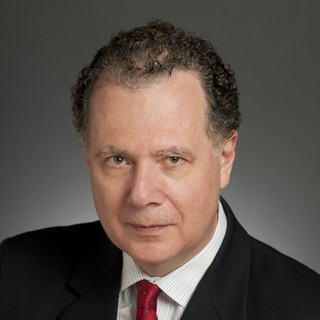John Agresto’s Aug. 7 essay “The Suicide of the Liberal Arts” is one of the more eloquent of the elegies for high culture that appear from time to time in the quality press. A former president of St. John’s College (Santa Fe), perhaps the best undergraduate Great Books program around, Agresto wrote in the Wall Street Journal:
When properly conceived and taught, the liberal arts do not by themselves make us “better people” or (God knows) more “human.” They don’t exist to make us more “liberal,” at least in the contemporary political sense. But the liberal arts can do something no less wonderful: They can open our eyes.
They show us how to look at the world and the works of civilization in serious and important and even delightful ways. They hold out the possibility that we will know better the truth about many of the most important things. They are the vehicle that carries the amazing things that mankind has made — and the memory of the horrors that mankind has perpetrated — from one age to the next. They teach us how to marvel.
Western culture has become inaccessible to the general public because we have lost the ability to see the world through the eyes of those who created it. A generation ago, the literary critic Harold Bloom complained in The Western Canon that it no longer was possible to teach English literature to undergraduates because they lacked the cultural references to make sense of it: imagine reading Moby Dick without knowing who Ishmael and Ahab were in the Bible, or Joyce’s Ulysses without knowing that someone named Homer had written an epic about a certain Odysseus. (Outside the English realm, Bloom is guilty of the same sort of ignorance, but that is a different matter).
There is a deeper problem, though: Why should we read works by long-dead authors with concerns entirely different than ours, and if we should, how can we do so?
Last week, my younger daughter (a St. John’s graduate) and I saw a Spanish-language production of Tirso de Molina’s 1630 classic The Trickster of Seville at New York’s Repertorio Espanol, a play I had been waiting to see for fifty years since I first encountered one of its derivative works, Mozart’s Don Giovanni. That was Don Juan’s debut as a literary personage, and no fewer than 1,720 published versions of the story followed during the next two centuries. The original was grittier than the Johnny Depp version: Juan is a sadist, but also a believing Catholic, who expects to repent at some future date and spend eternity in heaven.
In a 2010 essay for Tablet magazine, I wrote:
Concealed in its puppet-theater plot is a Jewish joke: Don Juan exists to prove by construction that a devout Christian can be a sociopath, and by extension, that the Christian world can be ruled by sociopaths. The Enlightenment’s most insidious attack on Catholic faith, then, came not from atheists like Voltaire, but from a Spanish monk with buried Jewish sensibilities.
Juan held the audience of the 17th and 18th Centuries in thrall, because he personified the Christian world’s foreboding about its own vulnerability. Tirso’s trickster poses an impossible paradox for the Christian concept of salvation: The story is not about eros, but evil. Christian society is founded on the premise that it requires “only one precept,” as St. Augustine put it: “Love, and do as you will.” Once humankind accepts the utterly unselfish love of Jesus Christ, Christianity asserts, the elaborate body of Jewish law becomes redundant, for Christian love will elicit the right behavior spontaneously.
The trouble, Tirso demonstrates, is that society that depends on conscience has no defense against a sociopath who has none. Don Juan is a predator inside the Christian world with no natural enemies. Juan enjoys murdering the male relatives of his female victims almost as much he enjoys seducing the women. To the extent that we can speak of Juan’s descendants in today’s fiction, they are not so much lovers but serial killers.
When the West cared about Christianity and its paradoxes, it couldn’t take its eyes off Tirso’s villain. By the time Byron wrote his eponymous epic, Christianity had faded from the culture and with it the public’s interest in Don Juan. Without Mozart, he would be forgotten. My daughter had attended a seminar on Mozart’s opera, and we had discussed Tirso’s theological joke beforehand. She called me crestfallen afterwards: most of the students wanted to know why Don Giovanni’s behavior was a problem in the first place. Wasn’t it a lifestyle choice?
Over coffee before curtain time, I offered that people in the past had different concerns than ours — for example, the Catholics of Spain at the height of the Thirty Years’ War, when Tirso published his play. “What are people concerned about today?” my daughter asked. I took a long time to reply. “I’m not sure they give much thought to big questions any more.” “That’s right,” she said. “This is a thoughtless age.” The lights darkened at the Repertorio Espanol, and the cast appeared onstage to twerk through a Caribbean pop number by way of overture. It was idiotic. We left after the first act. It’s hard to find a rendition of classic theater uncorrupted by postmodern directorial whim. Neither performers nor audience has any idea what the work is about, so it doesn’t much matter.
We can no longer teach Mozart, let alone Tirso, to undergraduates. We cannot place ourselves among the passions of Spain’s Golden Age, when the literary giant Lope de Vega wrote sonnets caricaturing Cervantes as a dirty Jew for lampooning the chivalresque pretensions of the Spanish nobility in Don Quixote. The great artists of the Golden Age were also soldiers and statesmen, important players in the prolonged wars that utterly ruined the Spanish Empire. In a post-Christian world we cannot understand what the Spanish were on about. If we can make no sense of Don Juan, how can we understand his antipode Raskolnikov, another theological construct invented to show us that a sociopath can receive grace? We lack the existential concerns that made this literature important in the past.
All the less so can we capture the terror and resignation with which the Greeks faced mortality in the great 5th century tragedies. In our cult of perpetual youth, we have made mortality an unmentionable. How could we read Greek culture as Nietzsche did in The Birth of Tragedy?
There is an ancient story that king Midas hunted in the forest a long time for the wise Silenus, the companion of Dionysus. … When at last he fell into his hands, the king asked what was best of all and most desirable for man. … at last, forced by the king, he broke out with shrill laughter into these words: “Oh, wretched race of a day, children of chance and misery, why do ye compel me to say to you what it were most expedient for you not to hear? What is best of all is forever beyond your reach: not to be born, not to be, to be nothing. The second best for you, however, is soon to die.”
How is the Olympian world of deities related to this folk-wisdom? Even as the rapturous vision of the tortured martyr to his sufferings. Now the Olympian magic mountain opens, as it were, to our view and shows to us its roots. The Greek knew and felt the terrors and horrors of existence: to be able to live at all, he had to interpose the shining dream-birth of the Olympian world between himself and them.
Sophocles and Euripides wrote during and after the Peloponnesian War that ruined Athens as surely as the Thirty Years’ War ruined Spain, and their work is not only a general meditation on the human condition but an elegy for their own civilization. This terrible self-awareness is something we do not find often in literature. Potocki’s The Manuscript Found in Saragossa after the Napoleonic Wars, Musil’s The Man Without Qualities after the First World War and Mann’s Doctor Faustus after the Second World War might be comparable. We can’t teach those to undergraduates, either; even in translation they are utterly foreign. Potocki’s masterpiece is so bound up with contemporary history that it demands continuous recourse to Wikipedia, while Musil and Mann deal with a German cultural realm utterly remote from Americans.
The last place where literature is read closely by a non-specialist public might be the Orthodox Synagogue, where the Hebrew Bible is examined through the eyes of ancient as well as medieval and modern commentators. It is read not as literature but as family history, and its readers have an existential interest in the result. The Hebrew Bible, to be sure, is not all of literature, but it is the best of it (nothing in Greek or Latin compares to the grandeur of Isaiah). Most of all, it is the continuing concern of a living community which has read it together for thousands of years.
To some extent, the conservative movement is to blame for the suicide of the liberal arts, through its embrace of Matthew Arnold and the cult of “culture” as a substitute for religion. Apart from the fact that Arnold was a dreadful poet, and said nothing that had not been said better three generations earlier by Friedrich Schiller, he has the whole thing backwards. The great works of high culture arose in the first place from the existential concerns of religion, and are incomprehensible without it. To propose culture as a substitute for religion is a contradiction in terms. Nietzsche ridiculed the culture-as-religion program of the so-called German Classic, pointing to Silenus’ goat’s foot under Apollo’s robes. Nietzsche was sadly right. As long as the ambient culture runs from the existential questions brought forth by religion, and as long as the religious public contents itself with the pap of popular culture, we will be shut off from access to the great works of the past.










Join the conversation as a VIP Member